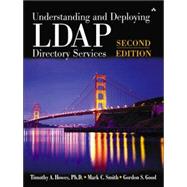
Timothy A. Howes, Ph.D., coinventor of the LDAP protocol, is the cofounder and chief technology officer of Opsware Inc., the leading provider of data center automation software. Previously, Dr. Howes served as vice president of technology for America Online, as chief technology officer of Netscape¿s Server Products division, and as chief architect of several Netscape server products.
Mark C. Smith is the chief architect for directory products at Netscape Communications Corporation, an AOL Time Warner company, where he is responsible for the technical evolution of Netscape Directory Server and several other products and services. Mr. Smith is coauthor of LDAP: Programming Directory-Enabled Applications with Lightweight Directory Access Protocol (Macmillan, 1997) and has written many RFCs and Internet Drafts.
Gordon S. Good is a senior software engineer at Opsware, Inc. Before joining Opsware, he worked at Netscape Communications Corporation, where he led the directory-server-replication development team. Gordon has written several RFCs and Internet Drafts.
I. AN INTRODUCTION TO DIRECTORY SERVICES AND LDAP.
1. Directory Services Overview and History.II. DESIGNING YOUR DIRECTORY SERVICE.
5. Directory Road Map.III. DEPLOYING YOUR DIRECTORY SERVICE.
13. Evaluating Directory Products.IV. MAINTAINING YOUR DIRECTORY SERVICE.
17. Backups and Disaster Recovery.V. LEVERAGING YOUR DIRECTORY SERVICE.
21. Developing New Applications.VI. CASE STUDIES.
24. Case Study: Netscape Communications Corporation.The New copy of this book will include any supplemental materials advertised. Please check the title of the book to determine if it should include any access cards, study guides, lab manuals, CDs, etc.
The Used, Rental and eBook copies of this book are not guaranteed to include any supplemental materials. Typically, only the book itself is included. This is true even if the title states it includes any access cards, study guides, lab manuals, CDs, etc.